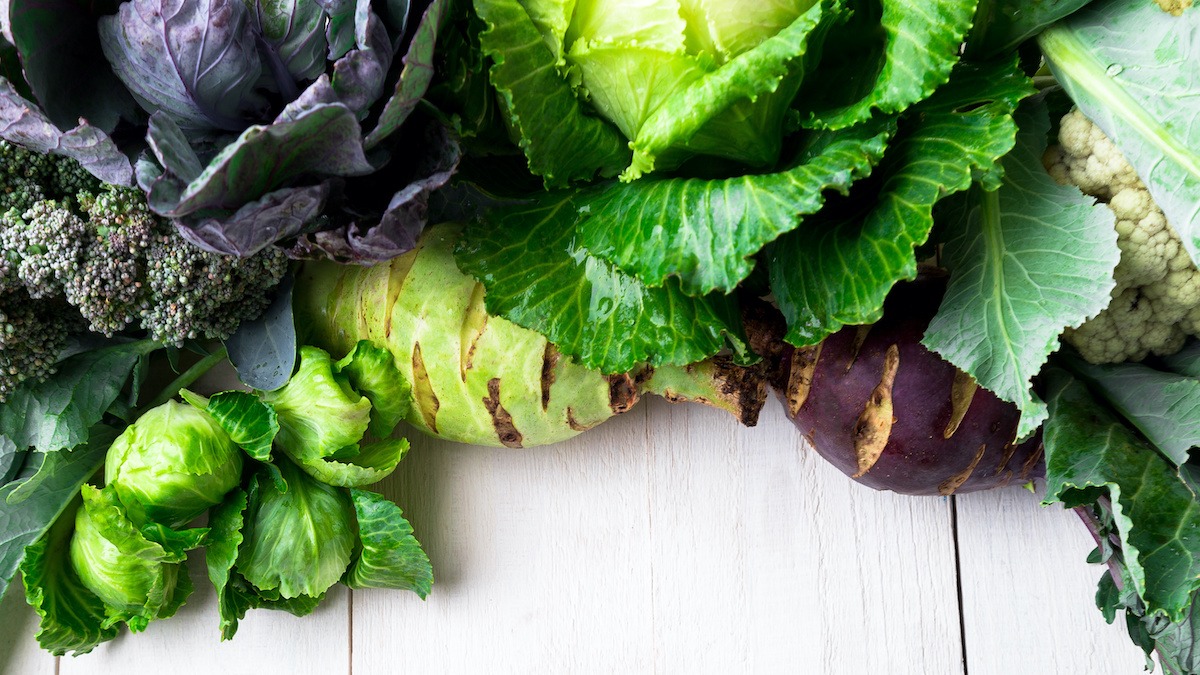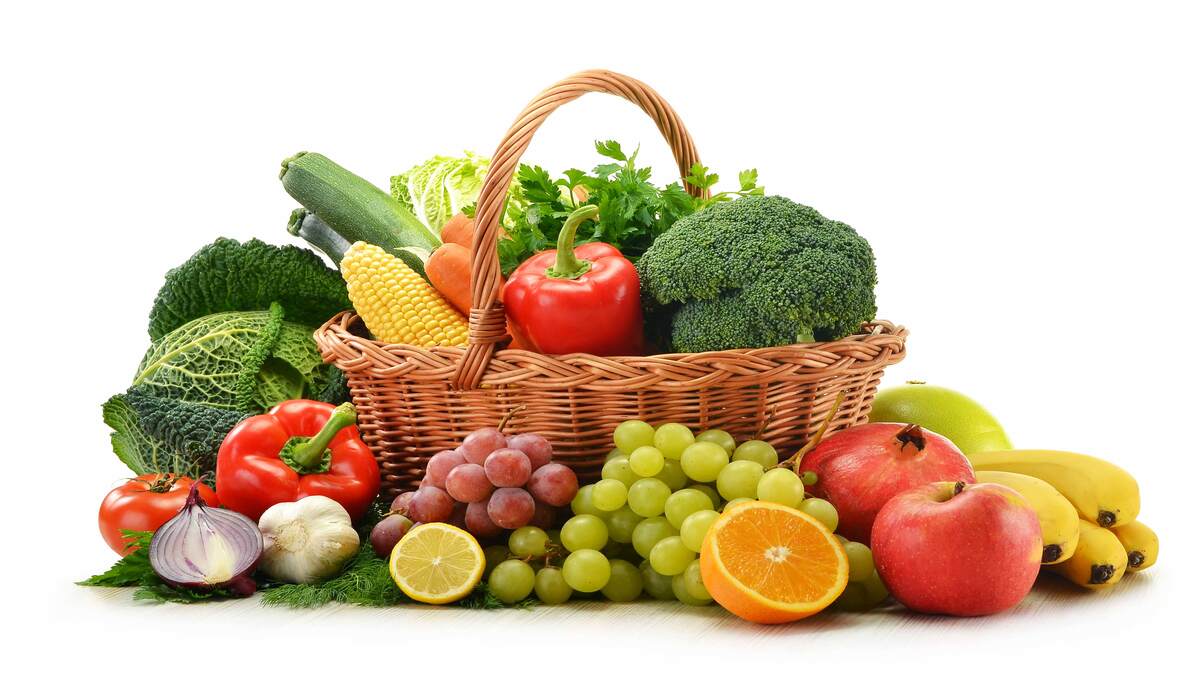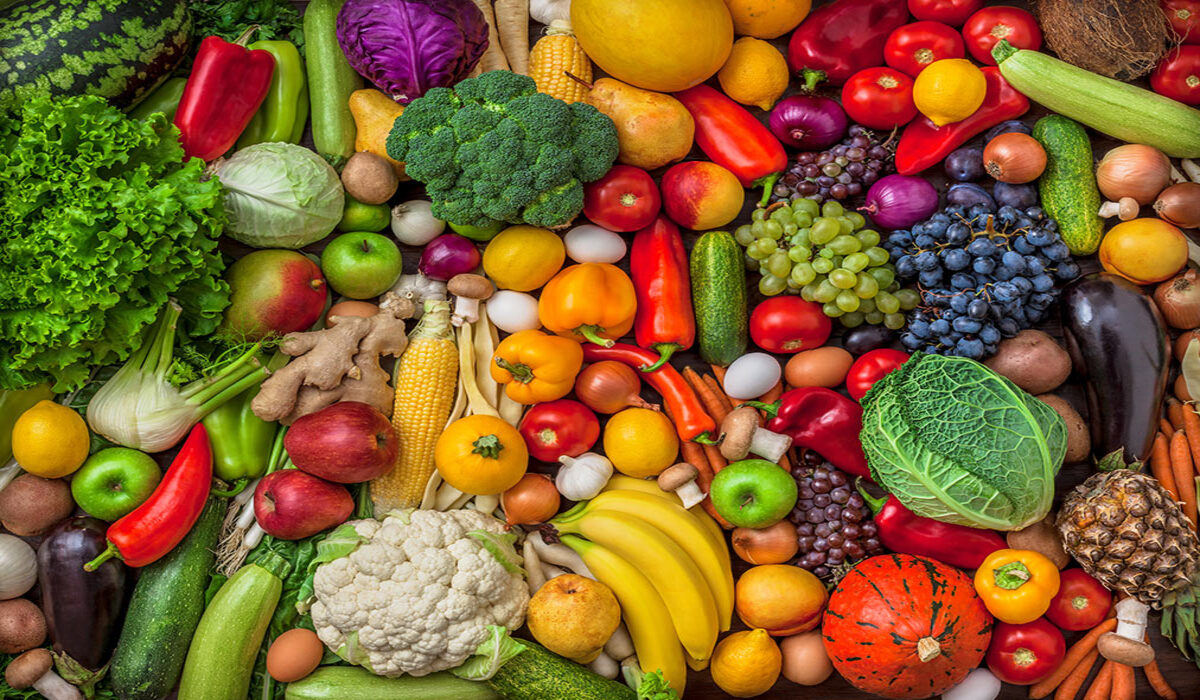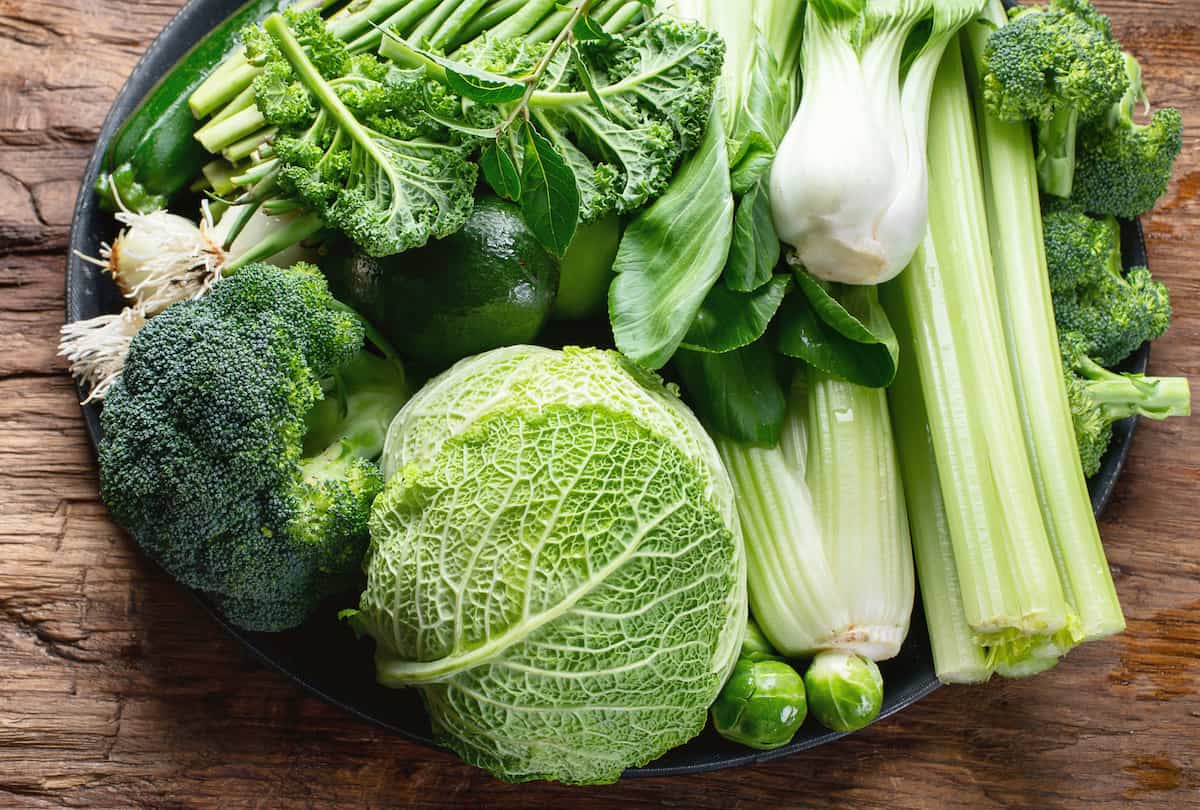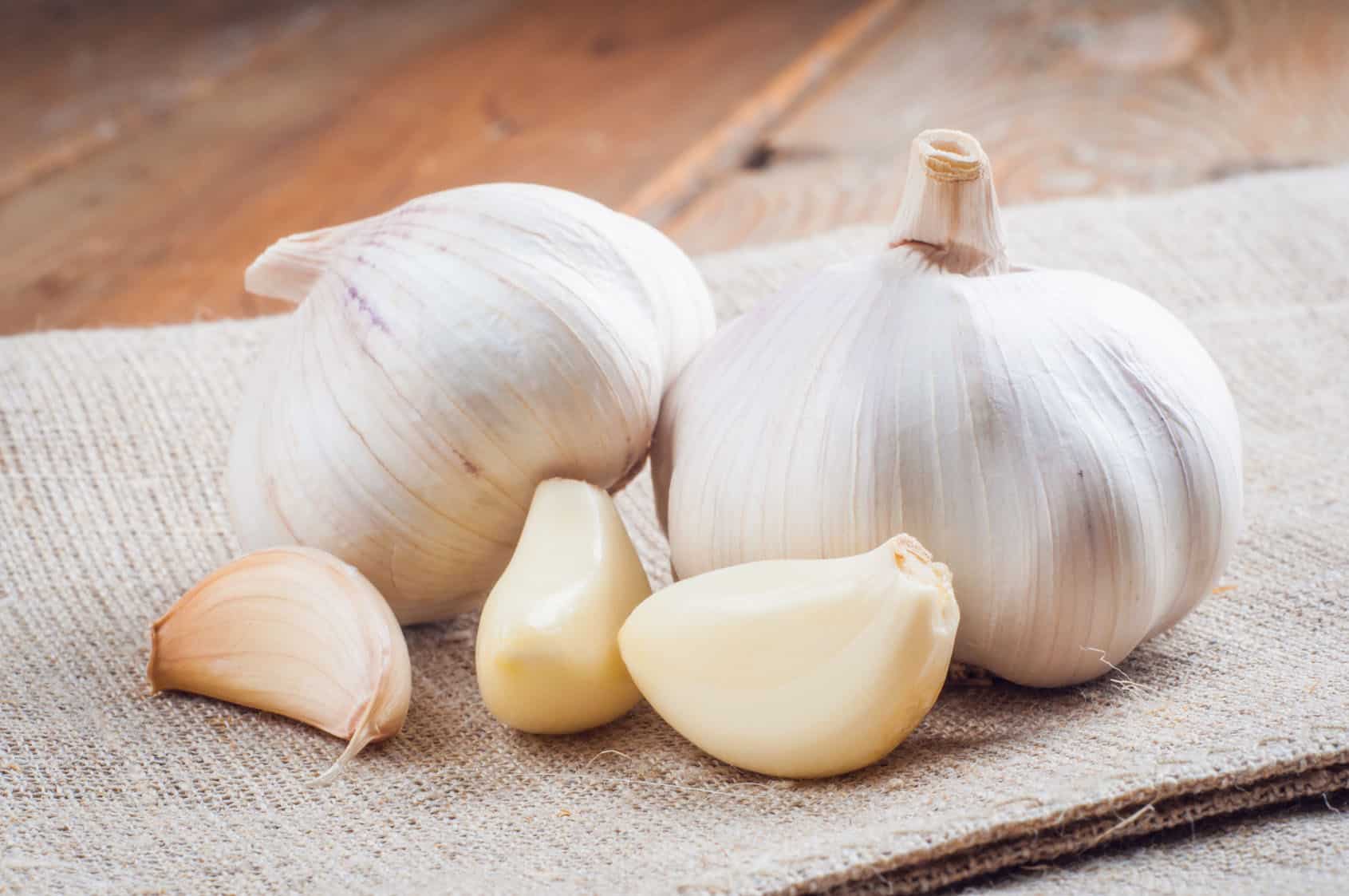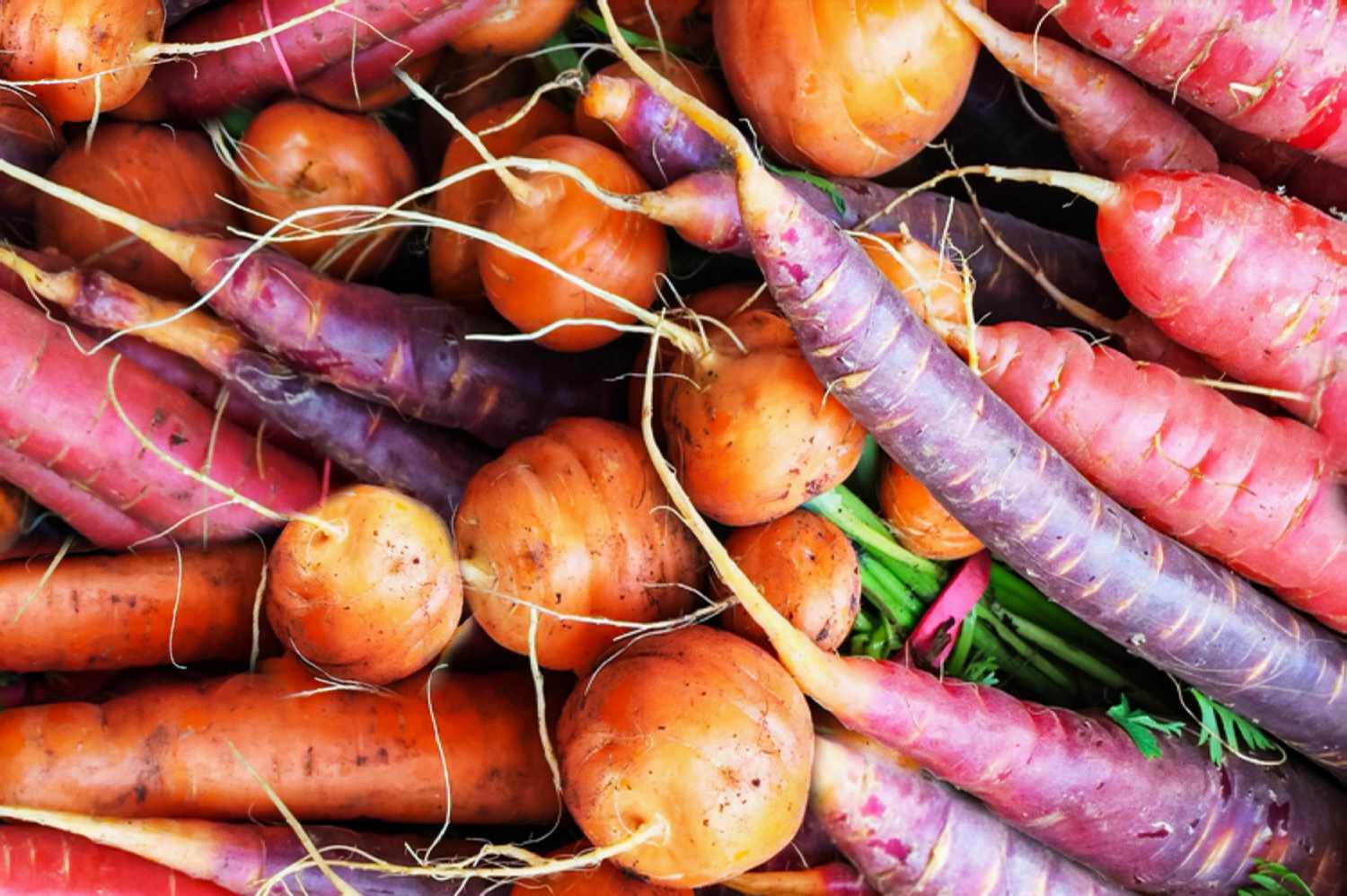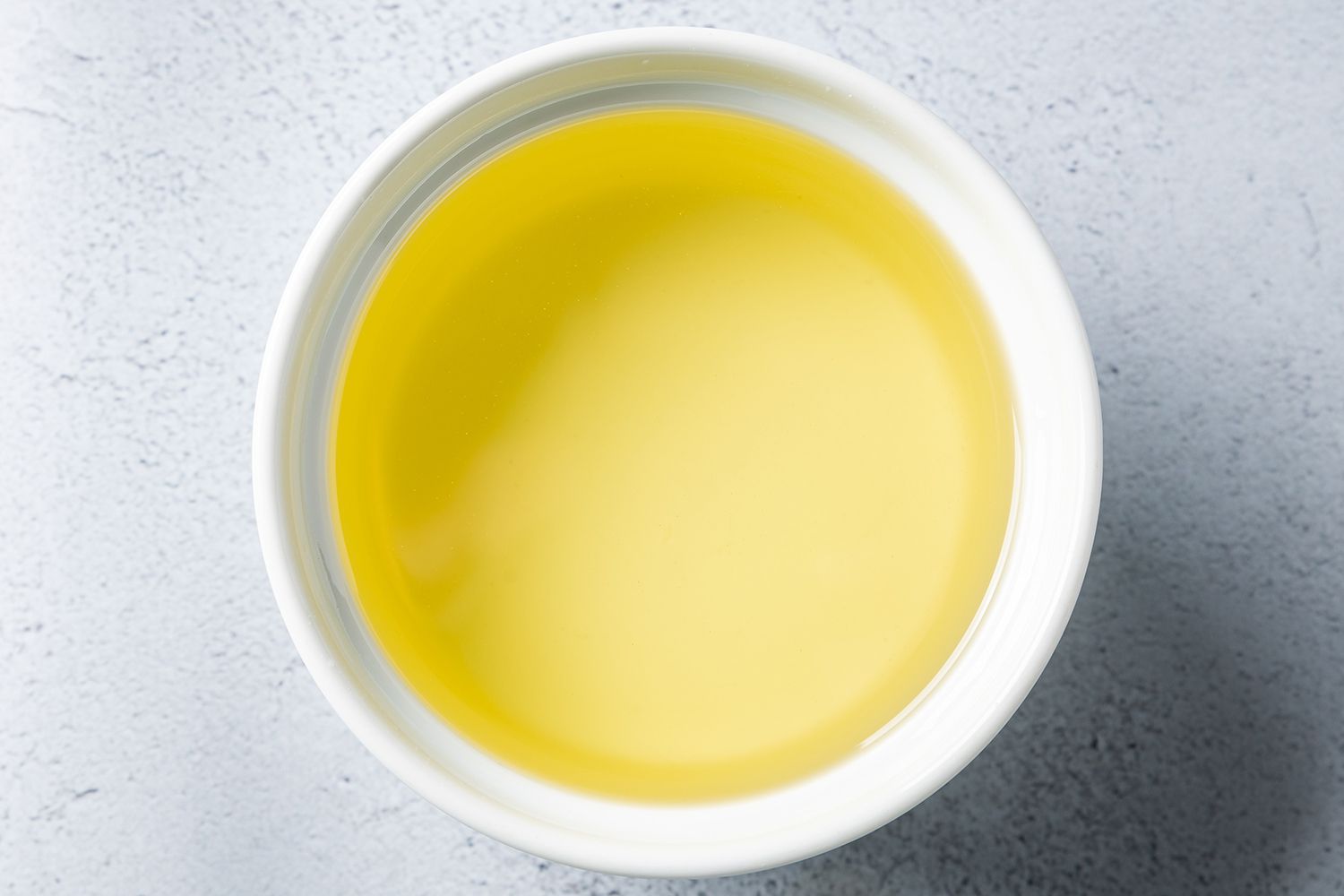Home>Gardening News and Trends>Latest News>What Vegetables Are Blue
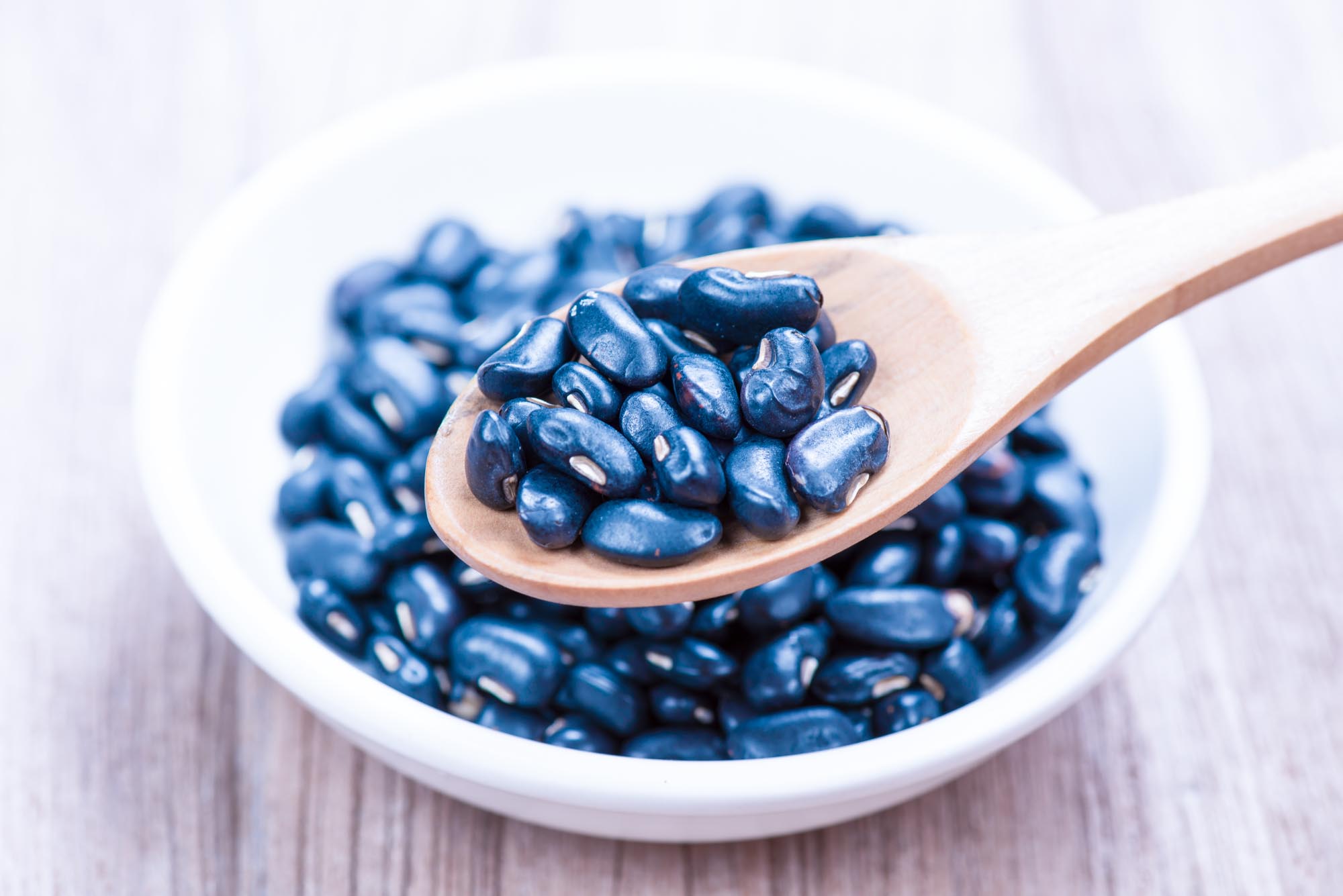

Latest News
What Vegetables Are Blue
Published: October 15, 2023
Discover the latest news on blue vegetables and learn about their unique health benefits. Find out which vegetables are naturally blue and how to incorporate them into your diet for a colorful and nutritious meal.
(Many of the links in this article redirect to a specific reviewed product. Your purchase of these products through affiliate links helps to generate commission for Chicagolandgardening.com, at no extra cost. Learn more)
Table of Contents
- Introduction
- Blue Vegetables: An Overview
- Anthocyanins: The Compound Behind Blue Color
- Popular Blue Vegetables
- Blue Potatoes: Varieties and Uses
- Blue Corn: History, Nutritional Value, and Culinary Uses
- Blueberries: A Nutrient-Packed Blue Fruit
- Purple Cauliflower: A Vibrant Addition to Your Plate
- Other Blue-Colored Vegetables: From Eggplant to Carrots
- Culinary Tips for Cooking with Blue Vegetables
- Conclusion
Introduction
Welcome to the fascinating world of blue vegetables! While we often associate vegetables with vibrant green hues, there is a surprising variety of vegetables that boast a unique and eye-catching blue color. These blue vegetables not only add a pop of color to our plates but also offer a range of health benefits.
From blue potatoes to blue corn and even blueberries, these vividly colored vegetables are as delicious as they are visually stunning. In this article, we will delve into the world of blue vegetables, exploring their origins, nutritional value, and culinary uses.
But what exactly causes these vegetables to be blue? The answer lies in a compound called anthocyanin. Anthocyanins are pigments that lend various shades of blue, purple, and red to plants. They not only provide the striking color but also exhibit antioxidant properties, potentially benefiting our overall health.
So, if you’re interested in adding a dash of blue to your meals and discovering new flavors, join us as we explore the wonderful world of blue vegetables and uncover their secrets!
Blue Vegetables: An Overview
Blue vegetables are a unique category of plants that can add a pop of color and flavor to your meals. While they may not be as common as their green counterparts, they are becoming increasingly popular for their vibrant hues and potential health benefits.
One of the main factors that contribute to the blue color of these vegetables is a group of pigments known as anthocyanins. These powerful antioxidants not only give these vegetables their striking blue color but also provide a range of health benefits.
Blue vegetables come in various shapes and sizes, each with its own distinct flavor profile and culinary uses. Some of the most popular blue vegetables include blue potatoes, blue corn, blueberries, and purple cauliflower.
Blue potatoes, with their deep blue skin and flesh, are not only visually appealing but also have a rich, earthy flavor. They can be used in a variety of dishes, from savory mashed potatoes to crispy roasted wedges.
Blue corn, a type of corn with blue kernels, has a slightly sweeter and nuttier taste compared to regular yellow or white corn. It is commonly ground into blue cornmeal, which is used to make tortillas, chips, and other traditional Mexican dishes.
Blueberries, while technically a fruit, are also considered a blue vegetable due to their vibrant blue color. These small berries are packed with antioxidants, vitamins, and minerals, making them a nutritious addition to both sweet and savory dishes.
Purple cauliflower, another member of the blue vegetable family, has a stunning deep purple color. It is not only aesthetically pleasing but also contains many of the same health benefits as its green and white counterparts.
In addition to these popular blue vegetables, there are other lesser-known varieties, such as blue-hued carrots and eggplants, that can add a touch of uniqueness to your recipes.
Whether you are looking to experiment with new flavors, add more color to your plate, or simply incorporate nutrient-rich foods into your diet, blue vegetables are a fantastic choice. In the following sections, we will dive deeper into the specific characteristics and culinary uses of these mesmerizing blue vegetables.
Anthocyanins: The Compound Behind Blue Color
Anthocyanins are a type of water-soluble pigment responsible for the vibrant blue, purple, and red colors found in many fruits, flowers, and vegetables. They are part of a larger group of compounds called flavonoids, which are widely known for their antioxidant properties.
These powerful pigments play a crucial role in the plant kingdom. They not only attract pollinators and seed dispersers but also help protect plants against harmful ultraviolet radiation and environmental stressors.
Anthocyanins are produced in specialized cells called vacuoles, which are responsible for storing water, nutrients, and pigments within the plant. Depending on the pH levels in these vacuoles, anthocyanins can appear as different colors. For example, a more acidic environment results in a red color, while a more alkaline environment leads to a blue or purple hue.
The presence of anthocyanins in blue vegetables not only gives them their visually striking appearance but also offers numerous health benefits. These compounds have been linked to various potential positive effects, including antioxidant and anti-inflammatory properties, cardiovascular health promotion, and even cancer prevention.
Research suggests that anthocyanins may help reduce the risk of chronic diseases by scavenging harmful free radicals and inhibiting inflammation in the body. Additionally, they have been shown to improve blood circulation, support healthy vision, and enhance brain function.
One interesting fact about anthocyanins is that their concentration in blue vegetables can vary depending on factors such as maturity, growing conditions, and storage. Generally, the darker and more intense the blue color of the vegetable, the higher the anthocyanin content.
However, it’s important to note that the health benefits of anthocyanins are best obtained through consuming a variety of whole foods, rather than relying solely on supplements or isolated extracts. Incorporating a diverse range of blue vegetables into your diet is an excellent way to harness the potential benefits of anthocyanins while enjoying a colorful and flavorful culinary experience.
Now that we have explored the compound responsible for the blue color in these vegetables, let’s dive into the individual characteristics and culinary uses of some of the most popular blue vegetables.
Popular Blue Vegetables
Blue vegetables offer a delightful twist to traditional dishes, adding a burst of color and unique flavors. Let’s take a closer look at some of the most popular blue vegetables and explore their distinctive characteristics.
Blue Potatoes: Blue potatoes, with their deep blue skin and flesh, are a visually stunning option. They are available in different varieties, including All Blue and Purple Majesty. Blue potatoes have a starchy and earthy flavor, similar to regular potatoes. They can be used in various cooking methods, such as boiling, roasting, or mashing. Blue potato chips are also a popular snack item.
Blue Corn: Blue corn, known for its striking blue kernels, has a slightly sweeter and nuttier flavor compared to typical yellow or white corn. It is often used to make blue corn tortillas, chips, and masa, a dough used to prepare tamales. Blue cornmeal is a versatile ingredient, adding a distinct flavor and color to baked goods, pancakes, and bread.
Blueberries: While technically a fruit, blueberries are often considered a blue vegetable due to their vibrant blue color. These small berries are not only delicious but also packed with antioxidants, vitamins, and fiber. Blueberries can be enjoyed fresh as a snack or incorporated into a variety of dishes, including salads, smoothies, and desserts.
Purple Cauliflower: Purple cauliflower is a standout vegetable with its vibrant purple hue. It has a texture and flavor similar to white cauliflower but with subtle nutty undertones. It can be enjoyed raw in salads, roasted, steamed, or even used as a colorful substitute in recipes that call for white cauliflower.
In addition to these popular blue vegetables, there are other lesser-known options that add a touch of uniqueness to your meals. These include blue carrots, which have a similar taste to regular carrots but offer a beautiful blue color, and blue-hued eggplants, which can be used in a variety of dishes such as stir-fries, curries, and dips.
Experimenting with these blue vegetables not only introduces exciting flavors and textures to your culinary repertoire but also infuses your dishes with an appealing visual appeal. Whether you’re looking to add variety to your meals or create visually stunning presentations, blue vegetables are a fantastic choice.
Now that we’ve explored the popular blue vegetables, let’s move on to discover specific varieties of blue potatoes and their culinary uses in more detail.
Blue Potatoes: Varieties and Uses
Blue potatoes are a delightful addition to any meal, offering a vibrant pop of color and a unique flavor profile. Let’s explore some popular varieties and discover the versatile culinary uses of these strikingly blue tubers.
All Blue Potatoes: All Blue potatoes, also known as Blue Peruvian or Purple Majesty, are one of the most recognizable blue potato varieties. These potatoes have an intense blue or purple skin and flesh, creating a visually stunning appearance. All Blue potatoes have a starchy texture and a subtly earthy flavor, making them perfect for various cooking methods. They can be boiled and mashed for creamy blue mashed potatoes or roasted to showcase their vibrant color.
Russian Blue Potatoes: Russian Blue potatoes feature a dark blue or purple skin with a slightly lighter hue inside. They have a firm texture and a rich, buttery flavor, making them a great choice for boiling, baking, or making crispy oven-baked fries. The bold color of Russian Blue potatoes adds an attractive contrast to salads and side dishes.
Adirondack Blue Potatoes: Adirondack Blue potatoes are known for their oblong shape, vibrant blue skin, and vibrant purple flesh. They have a creamy texture and a mildly sweet flavor. Adirondack Blue potatoes lend themselves well to boiling, steaming, or roasting. They can be sliced and made into colorful potato chips or used in creative dishes like blue potato gnocchi.
Blue potatoes can be used in a variety of dishes, both as the star ingredient and as a complementary element. Their vivid color makes them eye-catching additions to salads, gratins, and side dishes. Blue mashed potatoes can create a stunning visual impact on any dinner plate, while roasted blue potato wedges provide a flavorful and colorful twist to the conventional side dish.
Additionally, blue potatoes can be used creatively in recipes such as blue potato gnocchi, blue potato salad, or even blue potato soup. The possibilities are endless when it comes to incorporating these unique tubers into your culinary repertoire.
When preparing blue potatoes, make sure to handle them gently to avoid bruising their delicate flesh. As with other potatoes, it is recommended to wash them thoroughly and remove any eyes or blemishes before cooking. Depending on the recipe and personal preference, you can leave the skin on or peel them.
Blue potatoes not only enhance the visual appeal of your dishes but also offer a slightly different flavor compared to their white or yellow counterparts. So, why not explore the world of blue potatoes and elevate your meals with their stunning color and delicious taste?
Next, let’s delve into the fascinating history, nutritional value, and culinary uses of blue corn.
Blue Corn: History, Nutritional Value, and Culinary Uses
Blue corn, with its distinct blue kernels, offers a unique twist to traditional corn and has a rich history deeply rooted in Native American culture. Let’s explore the fascinating origins, nutritional value, and versatile culinary uses of this captivating variety of corn.
History: Blue corn has been cultivated for centuries by Native American tribes, particularly in the southwestern regions of the United States. It holds great cultural significance, as it is often used in ceremonial rituals and traditional dishes. The blue color is derived from the presence of anthocyanins, which not only give blue corn its striking appearance but also provide potential health benefits.
Nutritional Value: Blue corn is not only visually appealing but also offers a range of nutritional benefits. Like regular corn, it is a good source of carbohydrates, dietary fiber, and essential minerals such as magnesium and phosphorus. Blue corn also contains higher amounts of protein and antioxidants compared to traditional yellow or white varieties, thanks to the anthocyanins present in the kernels.
Culinary Uses: Blue corn can be ground into blue cornmeal, which is widely used in various culinary applications. One popular use of blue cornmeal is making blue corn tortillas. These tortillas have a slightly sweeter and nuttier flavor compared to their white or yellow counterparts. Blue cornmeal can also be used to make blue cornbread, muffins, pancakes, or as a coating for fried foods, adding both texture and color to these dishes.
Blue corn chips are another well-known product made from blue corn. These crunchy and colorful chips are a favorite snack item and can be enjoyed on their own or paired with dips and salsas. Blue corn chips are often perceived as a healthier alternative to regular corn chips due to their higher antioxidant content.
Blue corn can also be cooked and incorporated into various savory dishes. It can be boiled, steamed, or grilled and used as a side dish, mixed into salads, or added to soups and stews for extra color and texture. The nutty and slightly sweet flavor of blue corn kernels can enhance the taste of these dishes, offering a unique culinary experience.
When purchasing blue corn products or blue cornmeal, it’s important to choose organic and non-GMO options to ensure the highest quality and nutritional value. Additionally, storing blue cornmeal and blue corn products in a cool, dry place will help maintain their freshness and flavor.
Overall, blue corn not only satisfies our visual senses but also provides a range of potential nutritional benefits. Whether you enjoy it in the form of tortillas, chips, or incorporated into various dishes, blue corn offers a tantalizing culinary experience that celebrates both tradition and innovation.
Now that we’ve explored blue corn, let’s move on to the nutritional powerhouse of blueberries and their diverse uses in the culinary world.
Blueberries: A Nutrient-Packed Blue Fruit
Blueberries, often referred to as a superfood, are a small yet mighty fruit packed with essential nutrients and a vibrant blue color. Let’s explore the nutritional value and the diverse culinary uses of these nutrient-rich blueberries.
Nutritional Value: Blueberries are known for their high antioxidant content, specifically anthocyanins, which give them their striking blue color. These antioxidants help protect our cells from damage by harmful free radicals and may contribute to a reduced risk of chronic diseases, such as heart disease and certain types of cancer. Blueberries are also an excellent source of vitamins C and K, manganese, and dietary fiber.
Health Benefits: The nutritional profile of blueberries has been linked to several potential health benefits. The antioxidants in blueberries can help combat oxidative stress and inflammation in the body, which are the underlying mechanisms of many diseases. Consuming blueberries regularly may contribute to improved heart health, brain function, and management of blood sugar levels.
Culinary Uses: Blueberries are incredibly versatile and can be enjoyed in various ways. They are a popular addition to breakfast foods, such as oatmeal, yogurts, and smoothies. Blueberries can also be used as a topping for pancakes, waffles, and even salads for added sweetness and nutritional value.
Their natural sweetness and vibrant color make blueberries ideal for baking. They can be incorporated into muffins, cakes, pies, and bread, adding a burst of flavor and a delightful pop of blue to your baked goods.
Coupled with their tangy and sweet taste, blueberries can also be used in savory dishes. They can be added to salads for a refreshing twist or used as a component in sauces and glazes for meats or poultry.
Additionally, frozen blueberries can be easily stored and used throughout the year, allowing you to enjoy the nutritional benefits and culinary versatility of blueberries even when they are out of season.
When purchasing blueberries, it is best to choose organic options to minimize exposure to pesticides. Look for plump and firm berries with a deep blue color, as they tend to be the ripest and most flavorful.
Whether eaten fresh, frozen, or incorporated into various dishes, blueberries offer a delicious and nutrient-packed addition to your diet. So go ahead and savor the sweetness and health benefits of these vibrant blue fruits!
Next, let’s explore the vibrant and visually appealing purple cauliflower and its culinary possibilities.
Purple Cauliflower: A Vibrant Addition to Your Plate
Purple cauliflower, with its stunning deep purple color, is a unique and visually appealing vegetable that can elevate your meals both in appearance and flavor. Let’s explore the characteristics, nutritional benefits, and versatile culinary uses of this vibrant member of the cauliflower family.
Appearance and Taste: Purple cauliflower, also known as purple-headed cauliflower or violet cauliflower, boasts a vibrant hue that ranges from deep purple to lavender. Unlike traditional white cauliflower, purple cauliflower contains anthocyanins, which give it its striking color and potential health benefits. In terms of taste, purple cauliflower is similar to its white counterpart, with a mild and slightly sweet flavor.
Nutritional Value: Like white cauliflower, purple cauliflower is a nutritional powerhouse. It is low in calories but high in fiber, vitamins C and K, folate, and several minerals. The purple color of the cauliflower signifies the presence of anthocyanins, which are potent antioxidants that may help reduce inflammation and protect against certain diseases.
Culinary Uses: Purple cauliflower can be prepared and enjoyed in a variety of ways. It can be eaten raw as part of a vegetable platter or salad, where its vibrant color adds a visual appeal. When cooked, the color of purple cauliflower may fade slightly, but it still maintains its unique flavor and provides an exciting alternative to traditional cauliflower dishes.
Purple cauliflower is versatile in the kitchen and can be steamed, roasted, sautéed, or even grilled. These cooking methods not only bring out the natural sweetness of the cauliflower but also create different textures. Roasting or grilling purple cauliflower can impart a slightly caramelized flavor, while steaming or sautéing preserves its crispness.
Purple cauliflower can be used as a substitute for white cauliflower in various recipes. It can be riced or mashed to make a colorful alternative to cauliflower rice or mashed cauliflower. It can also be added to stir-fries, soups, and stews, where it adds a vibrant touch and additional nutrients.
When selecting purple cauliflower, look for heads that are firm, dense, and free from discoloration or dark spots. Store it in the refrigerator, wrapped in a plastic bag, to maintain its freshness for up to a week.
Next time you’re looking to add a pop of color to your plate, consider including purple cauliflower. Its striking appearance and health benefits make it a fabulous addition to any meal, providing both visual appeal and nutritious goodness.
Now, let’s move on to explore other blue-colored vegetables, such as blue-hued carrots and eggplants.
Other Blue-Colored Vegetables: From Eggplant to Carrots
While blue potatoes, blue corn, blueberries, and purple cauliflower are popular blue-colored vegetables, there are other fascinating options to explore. From blue-hued carrots to unique varieties of eggplants, let’s discover the colorful world of these lesser-known, but equally captivating, blue-colored vegetables.
Blue-Hued Carrots: While most carrots are orange, there are also varieties that come in shades of vibrant blue. Blue carrots are captivating with their deep blue or purple skin and bright orange or yellow flesh. These carrots get their blue coloring from anthocyanins, which provide potential health benefits. Blue carrots offer a slightly earthy flavor and can be enjoyed raw, roasted, steamed, or incorporated into various dishes.
Blue Eggplants: Just like blue potatoes, blue eggplants are not commonly found in grocery stores but can be an exciting addition to your vegetable lineup. These unique eggplants feature a striking blue or purple skin and have a slightly milder flavor compared to traditional eggplants. They can be used in a similar way as regular eggplants, such as grilling, roasting, or sautéing, and can add a visually appealing touch to your favorite eggplant dishes.
Blue-Green Spinach: While spinach is typically associated with green leaves, there are also varieties that feature blue-green foliage. These blue-green spinach varieties, such as the Malabar spinach, have a milder taste compared to traditional spinach and a slightly thicker texture. Blue-green spinach can be used in salads, stir-fries, smoothies, or even as a colorful addition to sandwiches or wraps.
Blue Radicchio: Radicchio is a leafy vegetable with vibrant red or purple leaves, but there are also varieties that exhibit a bluish color. Blue radicchio, such as the ‘Indigo’ variety, has a slightly bitter taste and adds a unique pop of color to salads, charcuterie boards, or as a striking garnish for various dishes.
These lesser-known blue-colored vegetables not only add visual interest to your plate but also provide unique flavors and potential health benefits. Incorporating these blue vegetables into your meals can be a fun way to experiment with colors and expand your culinary horizons.
When selecting blue-colored vegetables, look for those that are firm, fresh, and free from any signs of damage or decay. Properly store them according to their individual requirements to maintain their quality and freshness.
Now that we’ve explored a variety of blue-colored vegetables, let’s move on to discover some helpful culinary tips for cooking with these vibrant veggies.
Culinary Tips for Cooking with Blue Vegetables
When it comes to cooking with blue vegetables, there are several tips and techniques that can help you make the most of their vibrant colors and unique flavors. Whether you’re working with blue potatoes, blue corn, blueberries, purple cauliflower, or other blue-colored vegetables, here are some culinary tips to enhance your cooking experience:
1. Retain Color: Blue-colored vegetables can sometimes lose their vibrant hues during the cooking process. To retain their striking colors, consider cooking them gently and for a shorter duration. Steaming, blanching, or lightly sautéing can help preserve their natural pigments.
2. Balance Flavors: Blue vegetables can have distinct flavors, so it’s essential to balance them with complementary ingredients. Add a touch of acidity, like lemon juice or vinegar, to enhance the natural flavors. Sweeteners, such as honey or maple syrup, can help counterbalance any bitterness.
3. Mix and Match: Experiment with combining blue vegetables with other colorful ingredients to create visually appealing dishes. For example, pair roasted blue potatoes with orange carrots and green beans for a vibrant and nutritious side dish.
4. Texture Matters: Consider the texture of blue vegetables when planning your dishes. Blue potatoes can be mashed, roasted, or sliced into chips, while blue corn can be ground into meal or used whole in various recipes. Adjust cooking times and methods accordingly to achieve your desired texture.
5. Use Blueberries in Both Sweet and Savory Dishes: Blueberries are not limited to sweet applications only. They can add a burst of flavor and a touch of sweetness to savory dishes, such as salads, sauces, or glazes for meats.
6. Get Creative with Presentation: Take advantage of the vibrant colors of blue vegetables to create eye-catching presentations. Arrange different shades of blue vegetables on a platter or use them as a colorful garnish to elevate the visual appeal of your dishes.
7. Embrace Seasonings and Spices: Experiment with different seasonings and spices to enhance the flavors of blue vegetables. Fresh herbs like rosemary or thyme can complement the earthy taste of blue potatoes, while spices like cumin or paprika can add depth to blue corn dishes.
8. Incorporate Blue Vegetables in Everyday Recipes: Don’t be afraid to incorporate blue vegetables into your go-to recipes. Use blue potatoes instead of white potatoes in mashed potato dishes, substitute blue cornmeal for regular cornmeal in baking recipes, or add blueberries to your favorite smoothies or breakfast bowls.
Remember, cooking with blue vegetables is an opportunity to explore new flavors, colors, and culinary creativity. Don’t be afraid to experiment and enjoy the vibrant and nutritious world of blue vegetables!
Now that we’ve covered some culinary tips, it’s time to wrap up our exploration of blue vegetables and their versatility in the kitchen.
Conclusion
Blue vegetables offer a fascinating and diverse range of options for adding color, flavor, and nutritional value to your meals. From blue potatoes to blue corn, blueberries to purple cauliflower, and even blue-hued carrots and eggplants, these blue-colored vegetables bring visual appeal and unique characteristics to the table.
Anthocyanins, the compounds responsible for the blue color in these vegetables, not only give them their striking appearance but also provide potential health benefits. These antioxidants have been linked to reduced inflammation, improved cardiovascular health, and increased protection against chronic diseases.
When cooking with blue vegetables, it’s important to consider their individual characteristics. Retaining their vibrant colors, balancing flavors, and exploring different cooking methods can help you make the most of these visually appealing ingredients. Whether you’re enjoying a simple blueberry smoothie, roasting blue potatoes, or getting creative with purple cauliflower in your recipes, the possibilities are endless.
Incorporating blue vegetables into your diet is not only a feast for the eyes but also a way to enhance your nutritional intake. These vegetables offer a wide array of vitamins, minerals, fiber, and antioxidants, making them a fantastic addition to a well-rounded and healthy eating plan.
So, why not embark on a culinary adventure with blue vegetables? Explore new flavors, experiment with colors, and embrace the unique characteristics of these fascinating ingredients. From simple everyday dishes to elaborate creations, blue vegetables can elevate your meals and provide a nutritious and visually appealing experience.
Whether you’re a seasoned chef or an enthusiastic home cook, let the world of blue vegetables inspire your culinary creativity and introduce you to the delightful flavors and benefits that these vibrant veggies have to offer.

